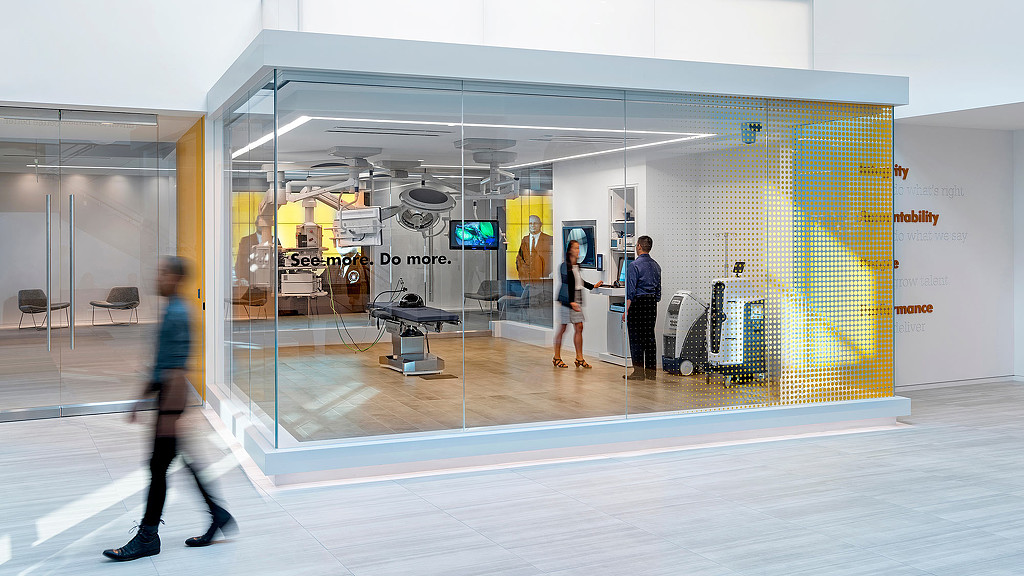The Benefits of Nurturing Organizational Pride in Life Science Workplaces
August 30, 2023 | By Nicholas Watkins, Ph.D., Erik Lustgarten, and Justin Cratty
Editor’s Note: This article is part of a series from the Gensler Research Institute reporting on the U.S. Laboratory Research Scientist Survey 2023. Click here to access the Briefing.
Organizational Pride Can Shrink Life Sciences’ Valley of Death
In the Life Sciences industry, the “valley of death” represents the widening gap between understanding the underlying causes of a disease (basic research) and developing novel and effective treatments (for clinical application). Within the multiple phases of development and testing (the valley) many drugs, therapies, and organizations can fail. One factor that could help mitigate the negative impacts of the valley of death is organizational pride.
Organizational pride is “pleasure taken in being associated with one’s employer,” and it represents the trust employees have in their organization from belonging, transparency, empowerment, and reliability. Gensler’s inaugural U.S. Laboratory Research Survey 2023 reveals that organizational pride has a direct and positive impact on outcomes such as improved product rollout and clinical trials.
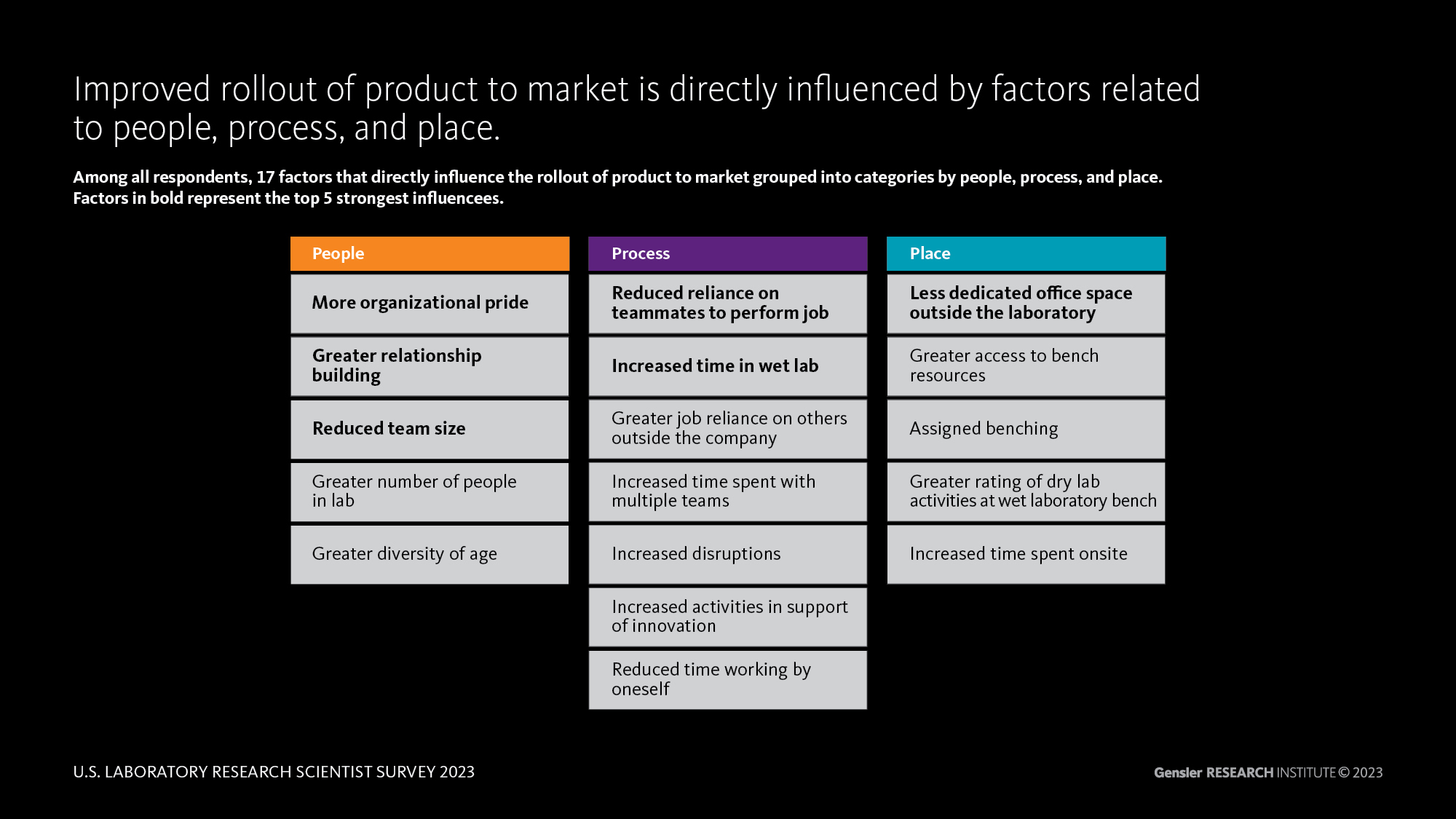
Scientific, peer-reviewed studies identify that organizational pride — and cynicism — is strongly related to organizational commitment. Our research uncovered how laboratory design can promote a sense of organizational pride and offers design insights that can be applied to other industries struggling with organizational cynicism and low commitment.
Organizational Pride Links Design and Layout with Key Performance Indicators
In their research paper, Design for Pride in the Workplace, Yichen Lu and Virpi Roto explore how experiences of pride — such as mastery, accomplishment, and appreciation by others — can be designed into the workplace. Examples include: design researchers’ experiences of mastery from designing experience centers for customers and trainees, training apps for welders, simulators for tugboat operators, and crane maintenance indicators. The design researchers and the consumers and employees who used their products reinforced each other’s pride through piloting, training, monitoring, and maintenance.
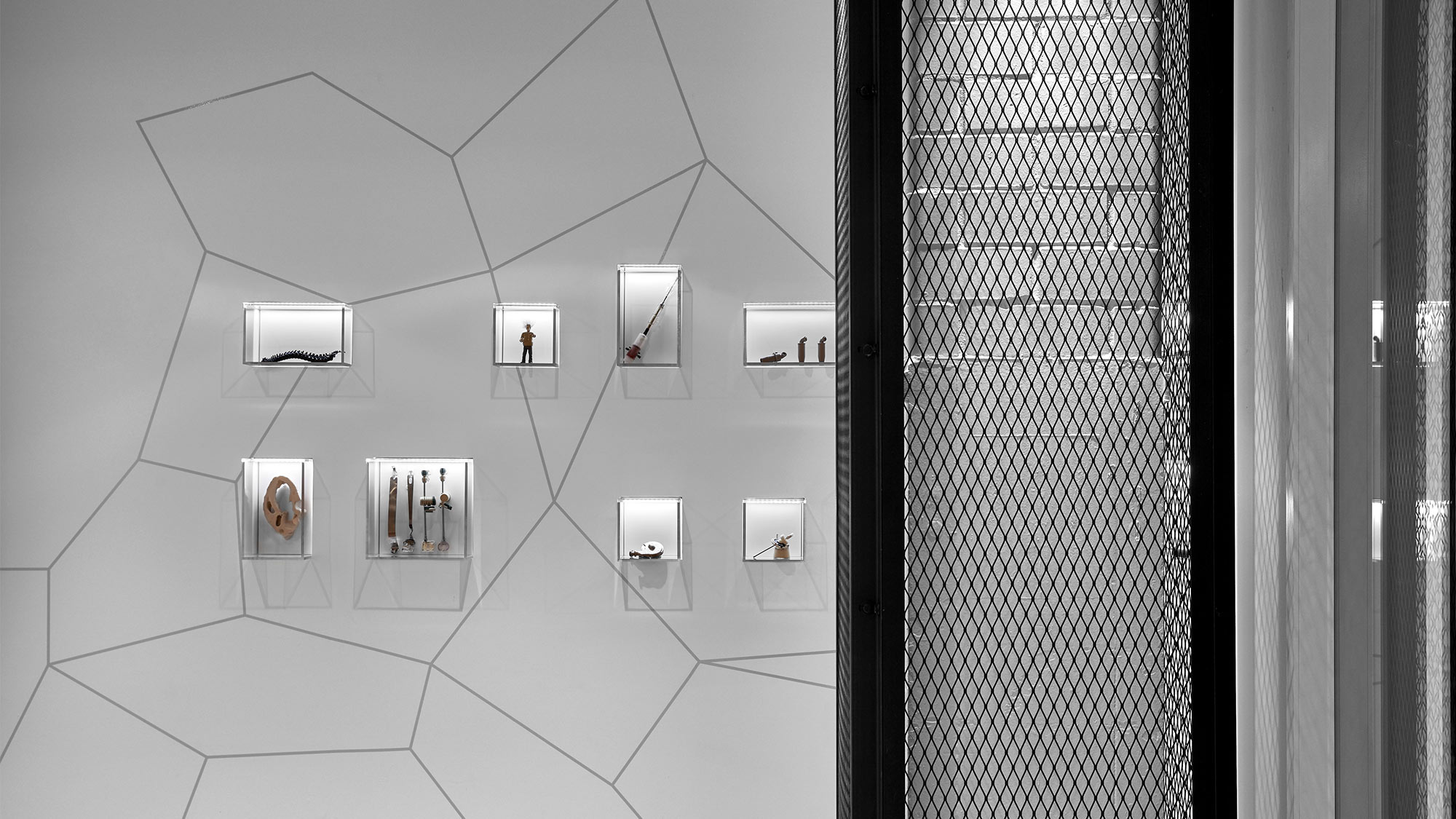
In Lu and Roto’s examples, the design may indirectly impact meaningful performance outcomes through organizational pride. Afterall, a laboratory bench is a multi-functional experience that needs a scientist to fluidly move through different work modalities and interactions as part of everyday workflow. The bench provides the affordances to allow these modalities to shift, seamlessly.
To understand the nuanced relationship among laboratory design, organizational pride, and key performance indicators, we performed a deeper analysis on 244 laboratory scientists in our study. In our research, we specifically looked at scientists who rated their bench as multifunctional — accommodating both wet lab experimentation and computational analysis. Exploratory and confirmatory factor analyses identified organizational pride, for the purposes of our study, as the scientist’s agreement with the following three items in the questionnaire: I would recommend my company; I am proud to work at my company; I speak positively about my company to others.
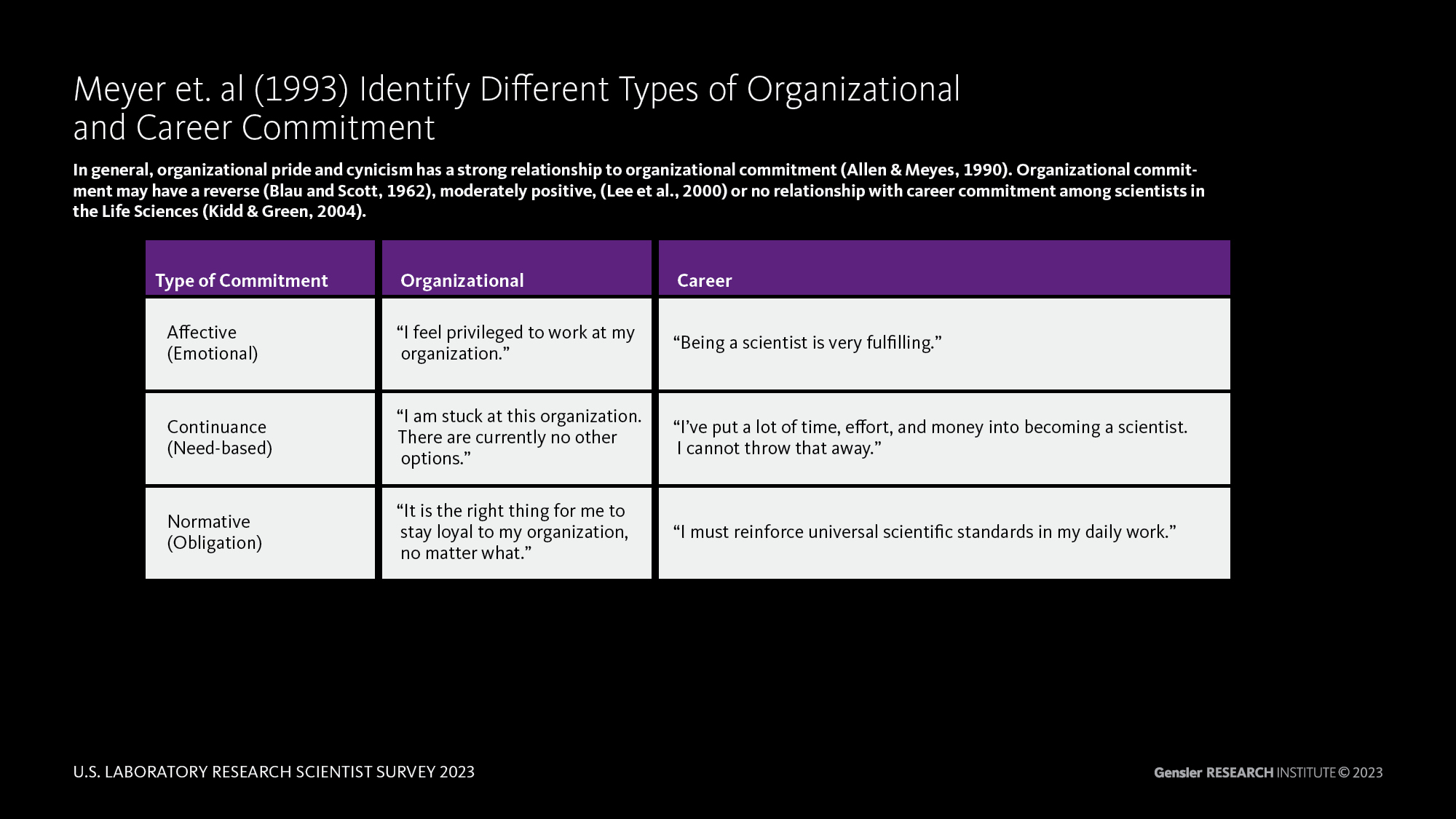
Indirect Impacts of Organizational Pride on Key Performance Indicators
We uncovered an interesting insight by employing mediation analyses to find indirect relationships among design and layout, organizational pride, and key performance indicators. Mediation analyses can find important indirect links between design and key performance indicators that would not show up with other analyses that only detect direct relationships. Organizational pride accounted for indirect relationships between design and layout and key performance indicators. In several cases, organizational pride with other variables was essential for success because the link between design and layout and a key performance indicator would not happen without it.
Organizational pride is essential to the indirect impact of assigned work area for write-ups, proximity to write-ups, and satisfaction with lounges/break areas on several key performance indicators, including improved product rollout and clinical trials. It is also important to scientist retention and activities that lead to innovation such as: risk-taking, novel idea generation, new uses for existing methods and equipment, identification of opportunities for new products, and empowerment to experiment with new ways of working. Organizational pride also partially accounts for the indirect relationship between assigned work areas for write-up, bench ergonomics, and visibility of other teams on key performance indicators such as rollout to market and retention.
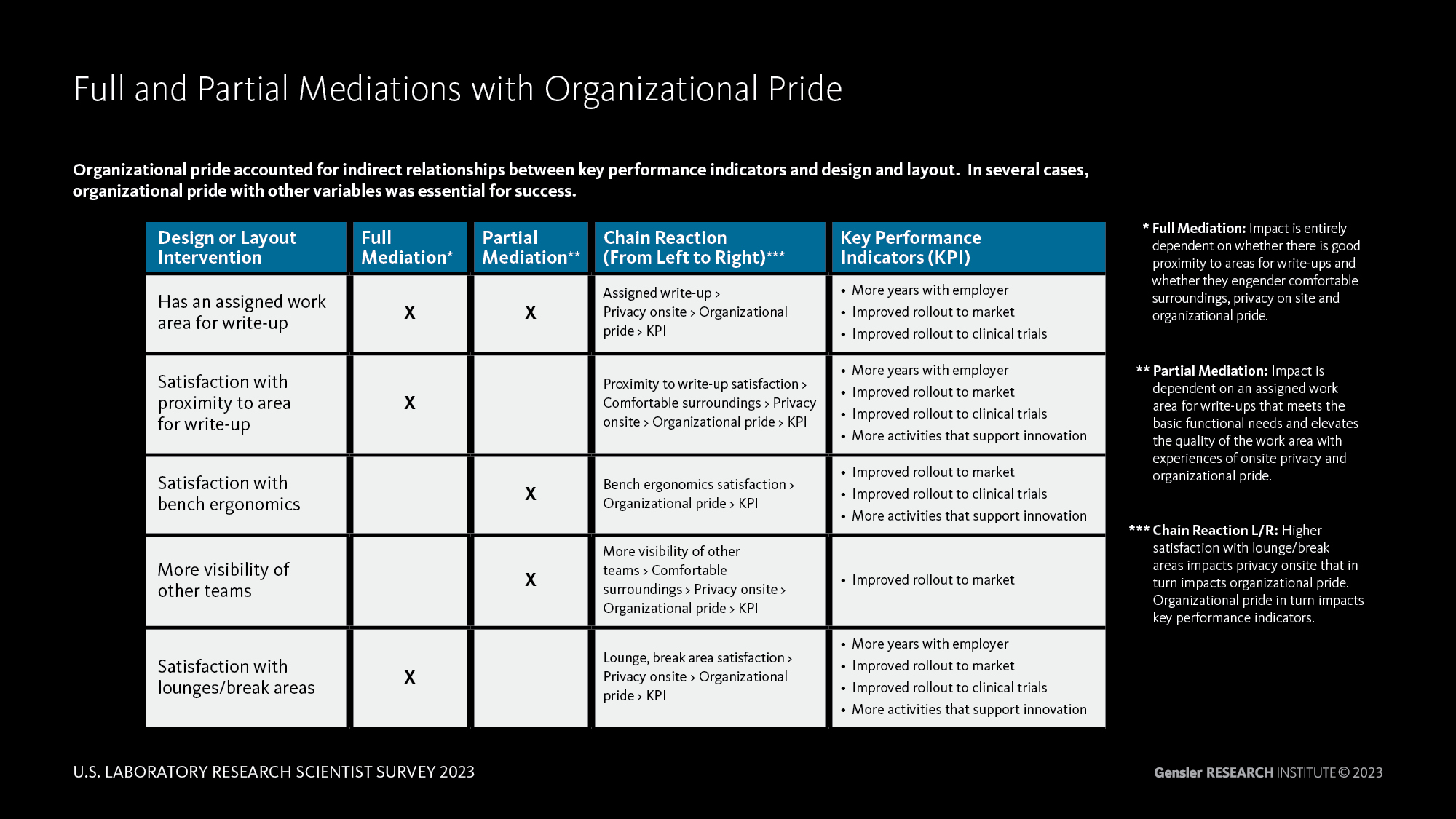
Given these results, well-designed laboratory settings that prioritize key spaces such as lounges, multi-use benches, and convenient drop-in spaces for write-ups will improve a lab’s overall performance and the satisfaction and pride of its users.
Future Possibilities with Organizational Pride
Today, the rise of hybrid work patterns, automation, and AI in the Life Sciences are radically shifting how we design laboratory settings to be more efficient and maximize scientists’ time for discovery and inference.
Organizational pride can be a powerful tool to realize the full potential of a design, layout, or policy for laboratory settings by elevating the experience of scientists. As the industry continues to transcend the “valley of death,” organizational pride can play a key role in driving the success of products as they advance from the laboratory to the market.
For media inquiries, email .
